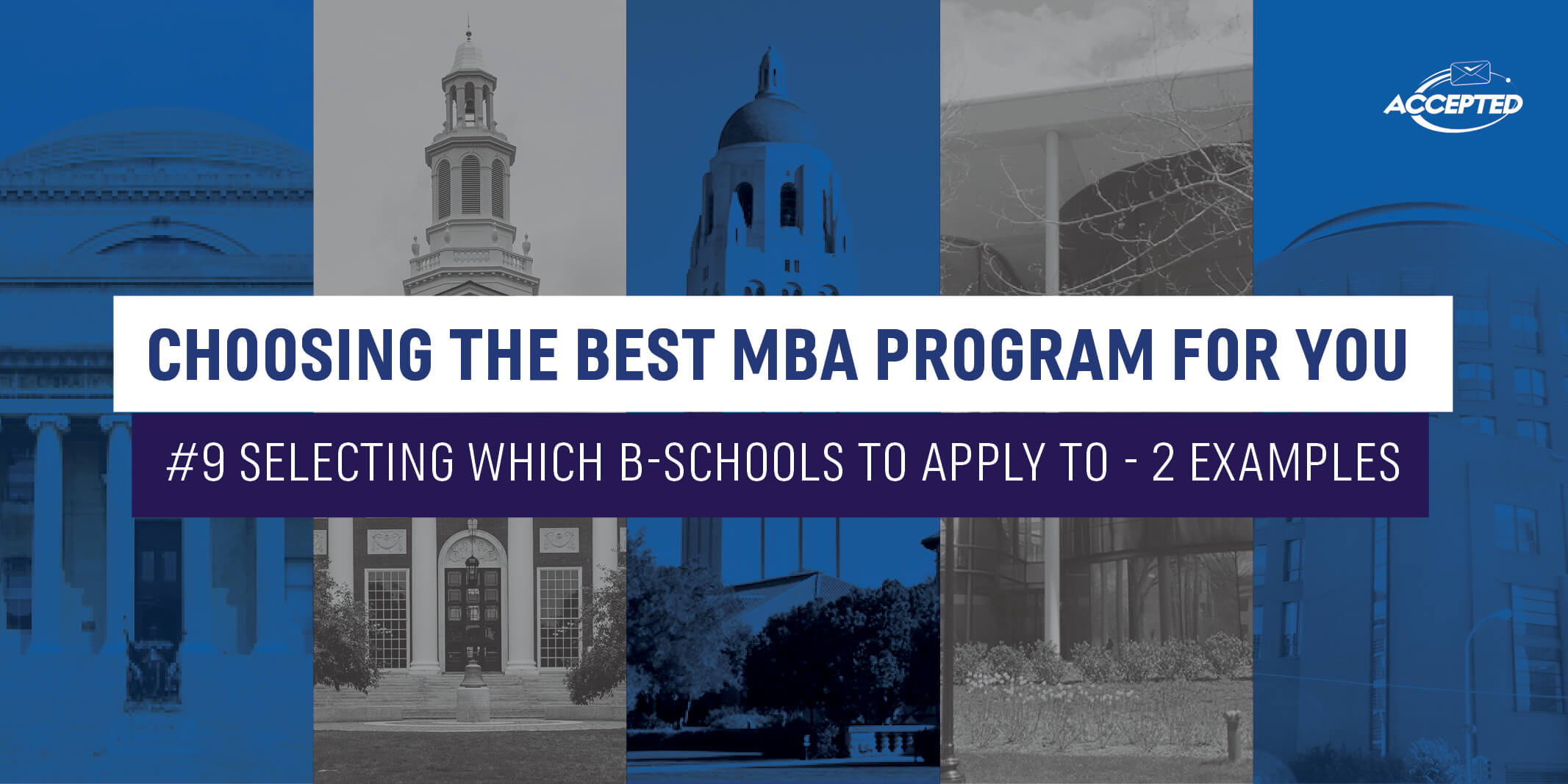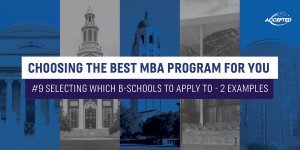

In our Choosing the Best MBA Program for You series, you’ll learn how to create a list of business schools that are the best fit for your educational, social, and professional preferences and how creating this list will boost your chances of getting accepted.
In the last eight posts in the series, we discussed various tips and techniques for choosing the right business schools based on your various needs, interests, and preferences. But how can this information be practically applied? Here are two examples that illustrate how this school selection process works.
Example 1:
A 25-year-old American male of Korean ethnic background in finance has two years as an investment banking analyst followed by one year in private equity. His career track record of impact and accomplishment is solid but not exceptional; similarly, he demonstrates clear but not outstanding leadership. He has a combined GMAT score of 710 and a GPA (from a strong but not elite college) of 3.45. His extracurricular activities are consistent but do not elicit a “wow.” His post-MBA goal is to return to his present employment at a higher level. MBA brand is important to him, but he accepts that he may not be competitive at Wharton or Columbia. Given his age, he would rather reapply (at least he knows where he can improve if need be – leadership, impact, and GMAT) than attend a program that does not excite him or that represents a steep compromise, and since no safety schools excite him, he selects only reaches and on-pars. Still, he’d love to get in this year, so he decides to apply to eight programs over Rounds 1 and Round 2 to widen his chances.
During his research he was surprised to find a few on-pars that interested him, and he put all three on his list: Georgetown (when he visited, he was unexpectedly thrilled by the extensive campus resources and the high caliber of students), USC Marshall (a lot more intense than he’d believed, and he was invigorated by the Asia focus), and Cornell (where his private equity experience will be a slight differentiating factor, and Cornell actually straddles reach-level). The five reaches vary in competitiveness: Columbia, Wharton, Chicago, NYU, and LBS.
Example 2:
A 30-year-old female is a junior manager in manufacturing operations, with a record of solid advancement and leadership. Her GMAT score is 680 and she has an undergrad GPA of 3.3 from a second-tier state school and a graduate (supply chain and IT) GPA of 3.65 from the same school. Her extracurricular activities include significant leadership in her church. This applicant’s post-MBA goal is to acquire a mid-level management position in global operations at a top-tier manufacturer that will lead to senior management within several years. She needs to get in this year because of her age, since she knows that chances of acceptance become increasingly difficult for each year after the age of 30. Her work experience is a strength, in part because women in operations are relatively few, but also because core manufacturing related experience isn’t highly represented in many programs. She doesn’t have the time, the resources, or in fact, the desire to apply to more than six schools, and she feels she should be able to gain acceptance to an exciting program if she approaches her list thoughtfully. She targets two reaches (Michigan and MIT – women are even a smaller percentage at MIT than at most US b-schools), two on-pars (Kelley and Tepper), and two safeties (Schulich in Canada and Krannert at Purdue University).
For both of the above hypothetical applicants, objective assessment of their profiles, thoughtful examination of their needs and wants, extensive school research, and consideration of the number of schools to apply to yield promising lists of targeted MBA programs.
You can significantly increase your chances of getting accepted by applying to the programs that are the best fit for your unique qualifications, goals, and preferences. Our MBA admissions consulting services will provide you with the one-on-one guidance you need to submit the best MBA applications to the best MBA programs for YOU!
Related Resources:
• Focus on Fit, a podcast episode
• 6 Tips for Visiting Business Schools
• How Many B-Schools Should I Apply To?
The post Selecting Which B-Schools to Apply to: Two Examples appeared first on Accepted Admissions Blog.


No comments:
Post a Comment